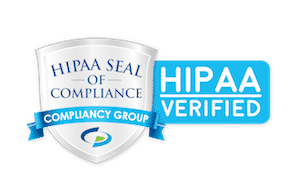Researchers seeking to fill a knowledge gap in what’s known about the magnitude of pediatric drug-related ER visits have found that 1 in 12 ER trips for children involved medications.
What’s more: the researchers found that about two-thirds of these visits were preventable.
The authors of the study, published earlier this year in the journal Pediatrics, reported that 8 percent of the 2,028 children included in the study had been taken to the ER for a medication related visit over a 12-month period. The most common cause of such visits found by authors Zed et al. were related to adverse drug reactions (26.4 percent), a sub-category of the more broadly defined adverse drug events (ADEs).
The authors describe ADEs as “unfavorable occurrences related to the use and misuse of medications.” An adverse drug reaction has been described as an ADE that is unintended and occurs at a normally used dose.
According to the Centers for Disease Control and Prevention (CDC), 700,000 of all ER visits and 120,000 hospitalizations annually are due to ADEs. The CDC says such events are responsible for $3.5 billion in additional medical costs per year.
Of the medication-related pediatric ER visits the authors identified in their study, 65 percent, or two-thirds, were found to be preventable. The study used a number of different factors to define a visit as “preventable,” including inappropriate drug, dosage, route, or frequency for patient’s clinical condition, age, weight, renal function; known drug allergy or previous reaction to drug; known drug interaction; non-adherence; laboratory monitoring not performed; and prescribing, dispensing, or administration errors.
The authors also found that the probability of hospital admission was 6.5 times higher among children with a medication-related visit compared to those who were admitted without one. Children who presented with medication-related issues also stayed twice as long.
The study looked at 2,028 children, ranging in age from less than 3 months to 19 years old, who had been treated at a pediatrics teaching hospital in Nova Scotia from 2011 to 2012. Zed et al. described the issue of child ER visits related to medications as currently “poorly studied” and sought to delve deeper, since the majority of research published on this topic has focused on adults.
The authors called for additional research on the subject and said intervention strategies to reduce instances of drug-related ER visits should be developed.
“The optimal strategy may involve interventions outside the hospital to improve prescribing practices and monitoring, particularly in high-risk patients or high-risk medications,” Zed et al. concluded.
Though individual genetics differences resulting in varied drug response (and potentially ADEs) were not specifically mentioned in the study, such information is key to improving personalized prescribing. Research has shown that as many as a third of potential clinically significant drug interactions, which could trigger ADEs, involve an individual’s DNA.
Interventions like the YouScript Personalized Prescribing System may be just what the doctor ordered. Learn more here.
Also consider these tips for preventing ADEs in your children:
- Regularly review your child’s drug regimen with healthcare providers, especially if your child is taking more than one medication. Always talk to your child’s doctor or pharmacist if you have any questions.
- Pay special attention to drugs metabolized by highly genetically variable enzymes. Such drugs include many of those used to treat pain and common psychiatric conditions.
- Monitor your child’s condition and behavior closely shortly after beginning any new medication.
The CDC has also compiled more general advice for keeping children safe when it comes to medications.


Your answer shows real inteeligencl.
Thank you for your feedback, Roberta! We are hard at work here to ensure patients are thoroughly informed about what their medication regimen may mean for their health.